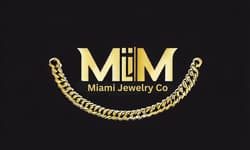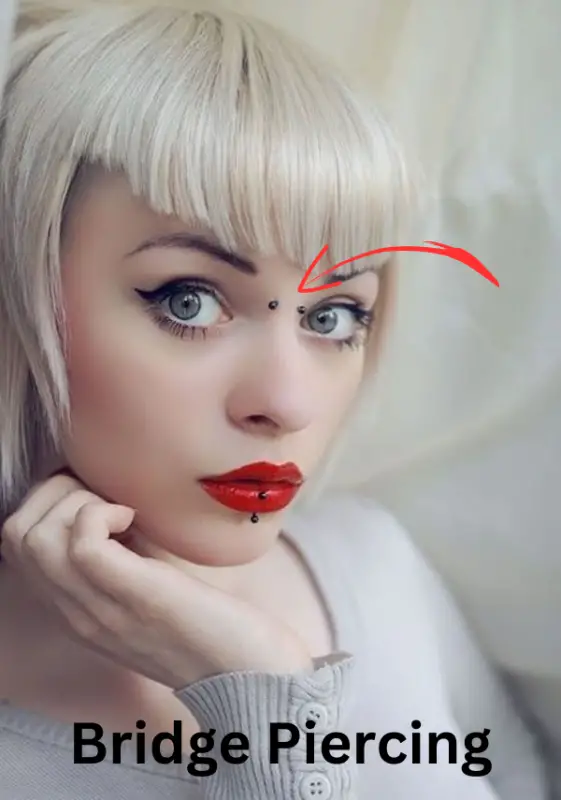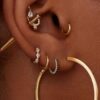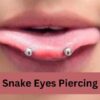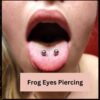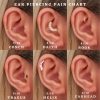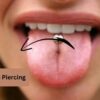Nose Piercing
Nose Bridge Piercing Explained : The Cost, Aftercare, and More
Welcome to the fascinating world of body art! In this comprehensive guide, I’ll take you through everything you need to know about bridge piercing, a unique and striking type of facial piercing.
Whether you’re a body modification veteran, or you’re new to the scene and considering your first piercing, I’ve got you covered.
Contents
- 1 Key Takeaways
- 2 What is Bridge Piercing
- 3 History and Origins
- 4 Procedure of Getting a Bridge Piercing
- 5 Bridge Piercing Video Guide
- 6 Bridge Piercing Aftercare and Healing
- 7 How long does it take to heal?
- 8 How much does Bridge Piercing Cost?
- 9 Bridge Piercing Pain
- 10 Possible Risks and Complications
- 11 Bridge Piercing Jewelry Recommendation by Expert
- 12 Bridge Piercing Types
- 13 Do bridge piercing scars go away?
- 14 Do bridge piercings reject?
- 15 Bridge Piercing Styling Guide
- 16 Frequently Asked Questions
- 17 Conclusion
Key Takeaways
- What is Bridge Piercing: Facial piercing located on the bridge of the nose, between the eyes.
- Procedure: Involves a needle going through the skin, not bone or cartilage.
- Common Jewelry: Mostly straight or curved barbells, circular barbells, or captive bead rings.
- Pain Level: Generally less painful than other facial piercings.
- Healing Time: Approximately 8 to 12 weeks with proper care.
- Aftercare: Regular cleaning with saline solution, avoiding unnecessary touching.
- Risks: Potential for infection, migration, and rejection.
- Professional Piercer: Essential for correct placement and reducing complications.
- Personal Considerations: Social, employment, and health considerations.
- Retirement and Scarring: Removal may result in minor, potentially fading scars.
What is Bridge Piercing
Bridge piercing is a distinctive type of facial piercing that is placed horizontally across the bridge of the nose, between the eyes. It involves piercing the loose skin at the top of the nose, not the bone or cartilage, and is typically adorned with straight or curved barbells. The bridge piercing, with its unique and prominent location, serves as a bold form of self-expression and aesthetic enhancement. Despite its striking appearance, the process is generally considered less painful than other facial piercings, given the absence of bone or cartilage involvement.
History and Origins
Ancient History
Believe it or not, bridge piercing has deep historical roots. In some cultures, it was (and still is) a rite of passage or a marker of social status. Intriguing, isn’t it?
Modern Popularity
Fast forward to the present day, and bridge piercing is now a part of the ever-growing body art culture around the world. It’s a way to express individuality and personal style.
Procedure of Getting a Bridge Piercing
Consultation:
Initially, there’s a consultation phase where you and your piercer discuss your needs, preferences, and suitability for a bridge piercing. They should assess your anatomy and explain the risks and benefits.
Cleaning and Marking:
Next, the piercer will clean the area thoroughly to reduce the risk of infection. They will then mark the entry and exit points of the piercing to ensure precision and symmetry.
Piercing:
The piercer will clamp the skin and insert the needle from one mark to the other. The jewelry, usually a straight barbell, is then inserted into the needle’s exit path and secured in place.
Aftercare Instructions:
Finally, the piercer should provide you with detailed aftercare instructions. These will be key to a smooth healing process and the longevity of your new piercing.
Bridge Piercing Video Guide
Bridge Piercing Aftercare and Healing
Once your new bridge piercing is in place, it’s crucial to follow proper aftercare routines to promote healing and prevent complications. Here’s a comprehensive guide to help you through this phase:
Clean Regularly:
Clean the piercing at least twice a day using a saline solution. This keeps the area free from bacteria and promotes healing.
Avoid Touching:
Try not to touch your new piercing unless necessary, and always wash your hands first to avoid introducing bacteria to the area.
Minimize Irritation:
Avoid activities that might irritate your piercing, such as swimming in chlorinated pools, applying makeup, or wearing glasses that rest on the piercing site.
Watch for Signs of Infection:
Be aware of any signs of infection, including persistent redness, swelling, pain, or discharge. If you notice these signs, seek medical attention.
Jewelry Care:
Don’t remove or change the jewelry until the piercing is fully healed, which usually takes about 8 to 12 weeks. If you wish to change the jewelry afterward, it’s advisable to do this at a professional studio.
Remember, your journey with your bridge piercing doesn’t end once you step out of the piercing studio. Proper aftercare is a crucial part of ensuring a healthy and beautiful piercing.

How long does it take to heal?
The healing time for a bridge piercing typically ranges from 8 to 12 weeks. However, keep in mind that everyone’s body is different and healing rates can vary. For some people, complete healing might take a little longer.
How much does Bridge Piercing Cost?
The cost of a bridge piercing can vary significantly depending on a variety of factors, including the studio’s reputation, the piercer’s experience, the region where you live, and the type of jewelry you choose. From my experience, a ballpark figure in the U.S. would be somewhere in the range of $50 to $100, not including the cost of jewelry. Remember, it’s essential to prioritize quality and safety over cost when choosing your piercing studio and jewelry.
Bridge Piercing Pain
A common question I hear is, “How much does a bridge piercing hurt?” Well, pain is a highly subjective experience and it can vary greatly from person to person. Some factors that might influence your experience include your individual pain tolerance, the skill of the piercer, and the specific technique they use.
Generally, most people describe the sensation as a quick, sharp pinch followed by a dull ache. You might feel some discomfort and sensitivity in the area for a few days after the procedure, but this usually subsides as the healing process kicks in. Using a reputable, experienced piercer and following a proper aftercare routine can help minimize discomfort.
Possible Risks and Complications
Infection
Like all piercings, there’s a risk of infection if the piercing isn’t cared for properly.
Migration and Rejection
Bridge piercings may migrate (move from their original spot) or be rejected (pushed out by your body) if they’re not done correctly.
Scarring
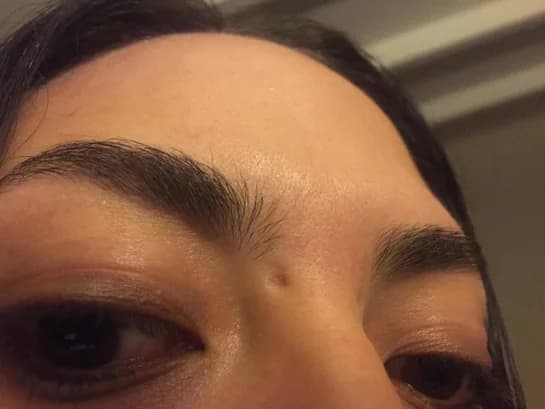
While some level of scarring is normal, improper care can lead to excessive scarring, so follow your aftercare instructions diligently.
Bridge Piercing Jewelry Recommendation by Expert
Having worked with a variety of piercing styles and jewelry over the past decade, I’ve learned that choosing the right jewelry for your bridge piercing is crucial, both for the healing process and for the longevity of the piercing.
Choosing the Right Type
There are several types of jewelry suitable for bridge piercings, but straight barbells are most commonly used. They tend to heal well and are less likely to cause issues like migration or rejection compared to other jewelry types.
While curved barbells and rings can be used, they’re generally not recommended, especially for a new piercing, because they can put uneven pressure on the piercing holes, increasing the risk of complications.
Selecting the Best Material
When it comes to material, your best bet is to go with either titanium or surgical steel, as these are hypoallergenic and well-tolerated by most people. Gold is another option, but only if it’s 14K or higher, as lower karats can contain impurities that might irritate the piercing.
Size and Fit
Size and fit are critical to consider. A barbell that’s too short or too long can put unnecessary pressure on the piercing and interfere with the healing process. An experienced piercer will be able to determine the right size for your anatomy and adjust as necessary during the healing period.
Thinking About Style
Finally, let’s not forget the fun part: style! Once your piercing is fully healed, you’ll have the freedom to experiment with different designs, colors, and even gemstones to really make the piercing your own. There’s a world of possibilities out there, from subtle and minimalist to bold and extravagant.
Changing Your Jewelry
It’s crucial to wait until your piercing is fully healed before changing your jewelry, which typically takes about 8-12 weeks.
Bridge Piercing Types
While bridge piercing typically refers to a barbell placed horizontally across the bridge of the nose, there are actually a few different variations to consider:
Traditional Bridge Piercing:
This is the most common type, where the piercing goes through the skin on the bridge of the nose. The jewelry sits flat against the face, giving the illusion of a bar floating above the nose.
Vertical Bridge Piercing or “Third Eye Piercing”:

This alternative style involves a vertical piercing between the eyebrows, typically adorned with a curved barbell.
Multiple Bridge Piercings:

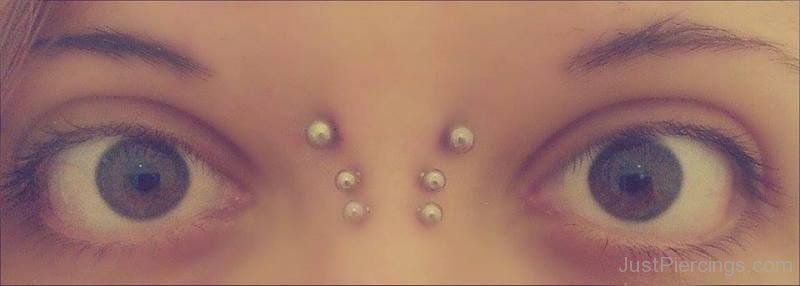

For those who really want to stand out, you can get multiple bridge piercings in a row. However, this style requires more space and isn’t suitable for everyone.
Remember, the best type of bridge piercing for you depends on your anatomy and personal preferences. A professional piercer can provide advice tailored to your specific needs and desires.
Do bridge piercing scars go away?
Bridge piercing scars usually don’t disappear by themselves. When you remove a bridge piercing or if it heals after rejection, a small scar is left. How visible this scar is depends on things like how well you heal, the size of the jewelry, and how long the piercing was in. The scar may become less visible over time, but it rarely goes away completely. Some treatments can help reduce scar visibility like gels, creams, or laser treatments. It’s best to talk to a healthcare professional or skin doctor to know the best options for you.
Do bridge piercings reject?
Yes, bridge piercings can reject. Rejection can happen with any piercing, but it’s more common with bridge piercings because of the location. This happens when your body sees the jewelry as something foreign and tries to push it out. If you see redness, itching, pain, or thinning skin around the piercing, or if the jewelry moves from where it was, your piercing might be rejecting. If this happens, talk to a piercing professional or healthcare provider right away. You might need to remove the piercing to avoid more issues, including scars. Taking care of your piercing properly and getting it done by a professional can reduce the risk of rejection. But your body’s own factors also matter.
Bridge Piercing Styling Guide
When it comes to styling your bridge piercing, there’s a lot of room for creativity! Here are a few tips to help you make the most of your unique body modification:
Complement Your Features:
Your bridge piercing should complement your features, not overshadow them. Choose jewelry that suits your face shape, skin tone, and personal style.
Coordinate with Other Piercings:
If you have other facial piercings, consider how your bridge piercing can coordinate with them. Matching materials, colors, or styles can create a cohesive look.
Play with Symmetry:
The symmetrical nature of a bridge piercing can be used to create balance and harmony with your other features or piercings.
Experiment with Jewelry:
Once your piercing is fully healed, try different types of jewelry to change up your look. Just make sure any new jewelry is of high quality and the right size for your piercing.
Make a Statement:
Lastly, don’t be afraid to make a statement! Bold or intricate designs can turn your bridge piercing into a real conversation starter.
Remember, the most important thing is that your piercing reflects your personal style and makes you feel good. Don’t be afraid to experiment and make it your own!
Further Reading for Piercing Enthusiasts:
- How To Reopen A Closed Nose Piercing
- Double Nose Piercing
- Nasallang Piercing
- Rhino Piercing
- High Nostril Piercing
- Mantis Piercing
- Is Titanium Good For Nose Piercings
- Foods To Avoid After Nose Piercing
- What Gauge Is A Nose Piercing
- Types of Nose Rings
Frequently Asked Questions
How painful is a bridge piercing?
A bridge piercing is usually less painful than other facial piercings. It goes through the skin on the nose bridge, not bone or cartilage. But remember, everyone feels pain differently.
What are the negatives of nose bridge piercings?
Bridge piercings may have a higher chance of moving and rejection. This is because there is less skin in the area. They can also cause trouble with glasses. They may also affect your work or social life because they are very visible.
Are bridge piercings hard to heal?
Bridge piercings usually heal in about 8 to 12 weeks. But this can change based on your health, skincare, and care for the piercing. Regular cleaning and not touching it can help it heal.
What does a bridge piercing mean?
Bridge piercings usually don’t mean anything in particular. Their meaning can change based on culture and the person. Many people see it as a way to express themselves.
How often do bridge piercings get rejected?
Bridge piercings have a higher risk of rejection. This is because there is less tissue in that area. But a good piercer and good care can lower the risk.
Which piercing hurts the most?
The pain from piercings can change from person to person. But people often say the most painful piercings are ones that go through cartilage. This includes daith, rook, or industrial piercings. Dermal and genital piercings can also hurt a lot.
Can I wear glasses with a bridge piercing?
Absolutely! You might just need to be a bit careful initially while your piercing is still healing.
What does a bridge piercing symbolize?
A bridge piercing, located between the eyes on the upper bridge of the nose, often symbolizes individuality, personal style, or a desire to challenge conventional beauty norms.
Conclusion
Bridge piercings can be a fascinating way to express your individuality and enhance your personal style. However, like all body modifications, they require informed decision-making and meticulous aftercare.
And with that, I hope this guide has given you a deeper insight into the world of bridge piercing. Here’s to your body art journey!

Camila Luna is a passionate jewelry enthusiast and content creator at Miami Jewelry Co. With a focus on providing high-quality, Miami-style jewelry, Camila and her team specialize in a wide range of jewelry that includes bracelets, necklaces, earrings, and more
